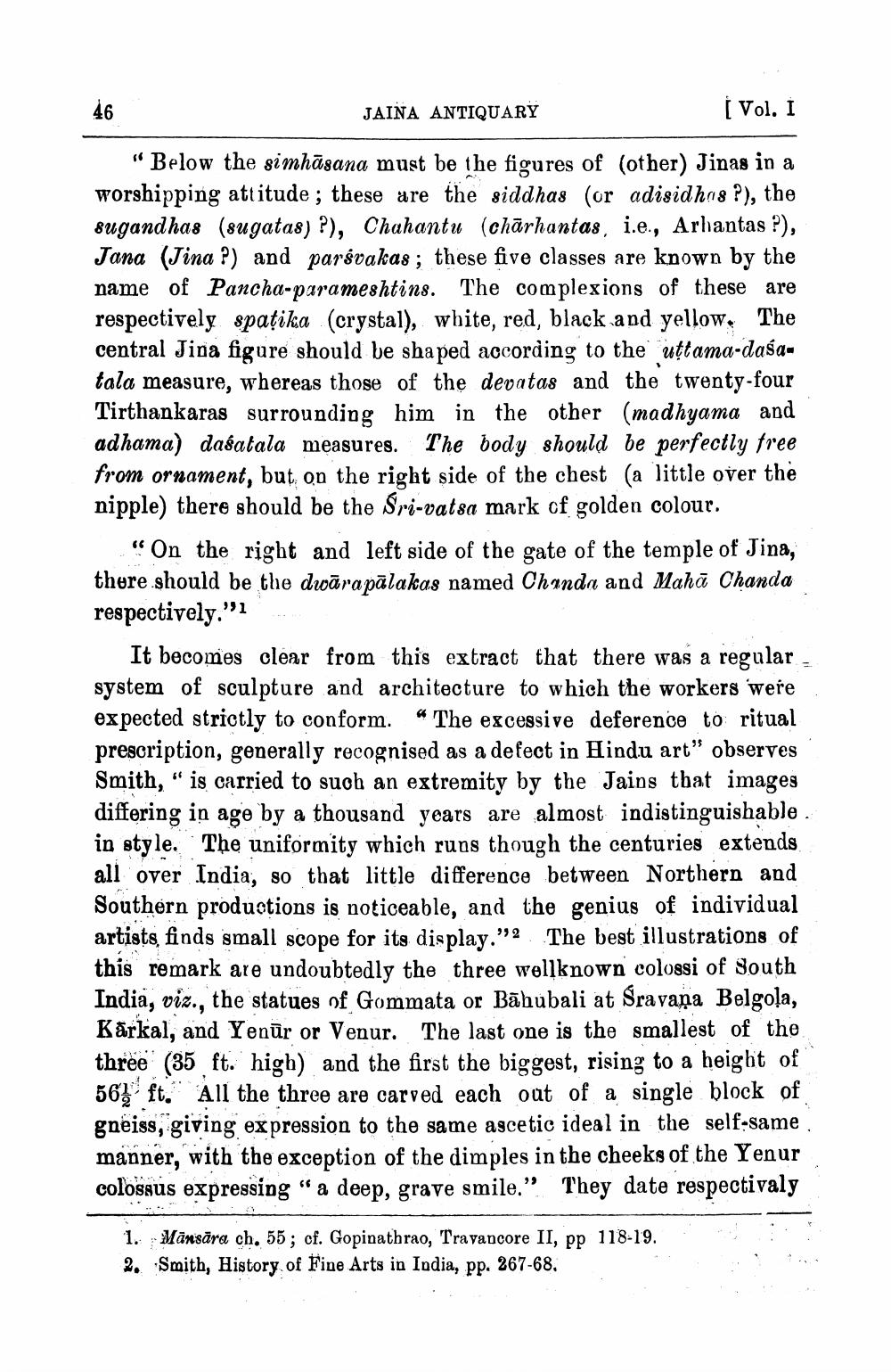________________
JAINA ANTIQUARY
(Vol. I
"Below the simhāsana must be the figures of (other) Jinas in a worshipping attitude; these are the siddhas (or adisidhns ?), the sugandhas (sugatas) ?), Chahantu (chārhantas, i.e., Arhantas ?), Jana (Jina ?) and parsvakas ; these five classes are known by the name of Pancha-parameshtins. The complexions of these are respectively spaţika (crystal), white, red, black and yellow. The central Jina figure should be shaped according to the uttama-daśatala measure, whereas those of the devatas and the twenty-four Tirthankaras surrounding him in the other (madhyama and adhama) daśatala measures. The body should be perfectly free from ornament, but on the right side of the chest (a little over the nipple) there should be the Sri-vatsa mark of golden colour.
"On the right and left side of the gate of the temple of Jina, there should be the dwāra pālakas named Chanda and Mahā Chanda respectively."1
It becomes clear from this extract that there was a regular system of sculpture and architecture to which the workers were expected strictly to conform. “The excessive deference to ritual prescription, generally recognised as a defect in Hindu art" observes Smith, " is carried to such an extremity by the Jains that images differing in age by a thousand years are almost indistinguishable . in style. The uniformity which runs though the centuries extends all over India, so that little difference between Northern and Southern productions is noticeable, and the genius of individual artists, finds small scope for its display." The best illustrations of this remark are undoubtedly the three wellknown colossi of South India, viz., the statues of Gommata or Bāhubali at Śravaņa Belgola, Karkal, and Yenār or Venur. The last one is the smallest of the three (35 ft. high) and the first the biggest, rising to a height of 56ft. All the three are carved each out of a single block of gneiss, giving expression to the same ascetic ideal in the self-same, manner, with the exception of the dimples in the cheeks of the Yenur colossus expressing " a deep, grave smile.” They date respectivaly
1. Mānsāra ch.55; cf. Gopinathrao, Travancore II, pp 118-19. 2. Smith, History of Fine Arts in India, pp. 267-68.




